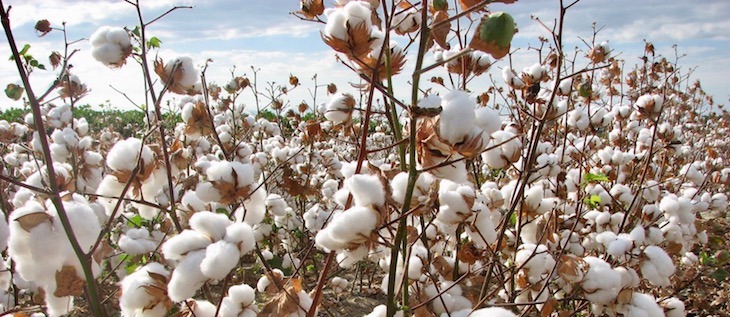Arkansas cotton growers eligible for COVID-19 related federal funding
by June 8, 2020 4:58 pm 1,557 views

Cotton growers who have been financially hurt by a global drop in demand and market prices are now eligible for relief funding through the federal Coronavirus Food Assistance Program.
The U.S. Department of Agriculture recently released additional details regarding the program, through which payments are now available for a number of non-specialty crops, including upland cotton.
Scott Stiles, extension economist for the University of Arkansas System Division of Agriculture, said non-specialty crops that experienced a 5% or greater price decline from mid-January to mid-April 2020 as a result of COVID-19 are eligible.
“Given the fact that CFAP payments are derived from two different funding sources, payment calculations may seem fairly complicated,” Stiles said. “For upland cotton, the average payment rate is determined to be 9.5 cents per pound.”
The payment rate will be applied to the lesser of either 50% of a producer’s 2019 total production or the producer’s 2019 unpriced inventory as of January 15, 2020. “Unpriced inventory” is defined as “any production that is not subject to an agreed-upon price in the future through a forward contract, agreement or similar binding document,” according to the USDA’s final rule, released May 21.
“In the initial payment, producers will receive 80% of the expected total payment, with the remaining 20% of the payment to be dispersed at a later date, subject to funding availability,” Stiles said.
An estimated $442 million in CFAP payments will go to U.S. upland cotton producers. While the USDA has not provided a state-by-state breakdown of payment estimates, Arkansas did account for approximately 7.8% of U.S. upland cotton production in 2019.
“Ignoring payment limitations, Arkansas’ share of cotton CFAP payments could be approximately $35 million,” Stiles said.
Bill Robertson, extension cotton agronomist for the Division of Agriculture, said the payments are welcome news for a struggling sector of the agricultural economy.
“Even though this is based on the 2019 crop, the assistance is greatly appreciated,” Robertson said. “Cotton exports have not developed the way we had planned and has impacted prices of last year’s crop, as well as contributing significantly towards what we are seeing now. I think things will continue to be depressed in the cotton world for a while.”
To apply for CFAP payments, producers of non-specialty crops must provide their respective county Farm Service Agency office with figures for their total 2019 production, as well as unpriced inventories as of Jan. 15, 2020. Applications for CFAP payments are now being accepted through Aug. 28, 2020.
Cotton acreage is projected to drop from 2019 plantings by about 5%, from 620,000 acres to 590,000 acres. Stiles said previous surveys, conducted by the National Cotton Council in December and January, suggested that overall cotton acreage would be down. The number of cotton acres in Arkansas has steadily grown during the last four years, but that streak will end this year, Stiles said. Arkansas typically ranks about third in U.S. cotton production accounting for about 7% of the total crop.
